C.A.A. Savastano's Blog, page 2
July 25, 2024
Historical Intelligence and Modern Political Assassination

Join researchers Rob Clark, Joe Borelli, and their guest author Carmine Savastano to discuss historical intelligence and the attempted Trump assassination. They inspect security lapses, the shooter, several missed opportunities to foil the plot, and the future political landscape.
June 20, 2024
The Central Impersonation Agency
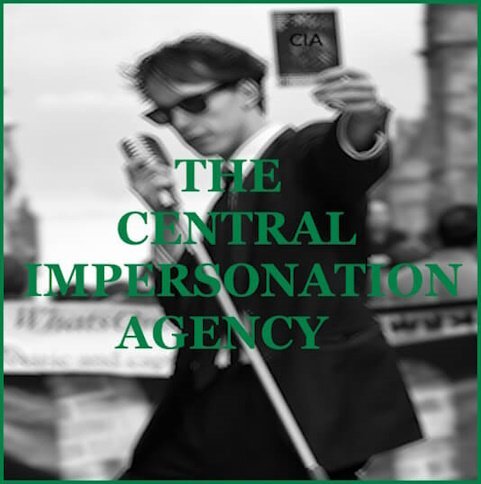
The Company, BKHERALD, KUBARK, and several other coded, official, and unofficial names exist to describe the Central Intelligence Agency. Lurking in the shadows of clandestine operations the CIA over generations has undertaken some of the most complex impersonations and created numerous false entities or businesses to support its goals. CIA remains among the intelligence groups which possess skilled operatives that can generate deceptive credentials and identities as routine business. Yet less known are those who for a time evaded detection falsely using the name of the CIA and the operations they conducted illegally. Some of these varying people included minor intelligence assets, foreign militants, and criminals that used the Agency’s reputation to further secret enterprises and left officials deal with the ramifications.
One of the earlier instances of what officials note might become a “technical violation of impersonation statutes” involved two Cuban exiles within the American city of New Orleans during nineteen sixty-one. Manuel del Valle Caral and Julio Jane Arguida were both anti-Castro exiles used by the Central Intelligence Agency but without authorization the pair began recruiting Cuban students to join their cause. This method is similar to some of the original pro and anti-Castro groups formed in Cuba using academic cover to pursue intelligence goals. Yet these two individuals exceeded the mandate officials gave them and sought to illegally use the reputation of the US government to increase their ranks. A Federal Bureau of Investigation agent notified the FBI’s liaison with the CIA Sam Papich, Western Hemisphere Division employee Robert Wehdbee, and counterintelligence officer Jane Roman of the exile attempts.i This presents a minor example of the gray area that can develop within clandestine operations and the potential of assets using methods officials never approved. Nevertheless, illegal student recruitment was just a minor official concern, what if a person manipulated an entire group under such false pretenses for illegal acts?
The CIA would learn amongst nineteen seventy-three anti-Castro exile Guillermo J. Yglesias was financially bilking people under the pretense of government employment. Yglesias was a former member of the Movimiento de Recuperacion Revolucionario (Movement for the Revolutionary Recovery, MRR) a CIA funded group that in the past was given the ability to launch operations autonomously. It appears that Guillermo had decided to create his own autonomous structure to fiscally benefit himself and unknown others. The first significant lead emerged from a communication sent by Anselmo Alliegro, the nephew of Yglesias via marriage. He informed the CIA’s Domestic Contacts Division (DCD) his uncle contacted him amid early March of the same year “and stated that he worked for the United States Government, implied CIA”.ii
Guillermo told his nephew that employment for the Berwinder Corporation served as his cover and spun an elaborate tale of Watergate connected investigations freezing accounts required for secret operations. A forged or stolen document Alliegro observed purported that officials tasked “Ralph” with raising funds and officials would provide a Ponzi scheme like monthly return of ten to twenty percent for all money invested. Yglesias then asked his nephew “as an important favor to him” for a contribution “to his emergency funds.” By March 5th, 1973 Anselmo had given five thousand dollars to Guillermo’s “emergency fund” and provided a further nine hundred dollars for personal expenses. Over a month would pass and Anselmo’s investment return did materialize and by this point Yglesias had moved to a new rental home. The only way left to contact the latter was by telephone and when questions of money were discussed Anselmo was informed of a “delay in Curacao” and Yglesias deflected the questions with an offer “to work for him and his organization”. Already fifty-nine hundred dollars poorer, Alliegro informed his scheming relative he needed “some proof this was an official matter before I were to accept” due to his curiosity about what this “business actually was.”iii
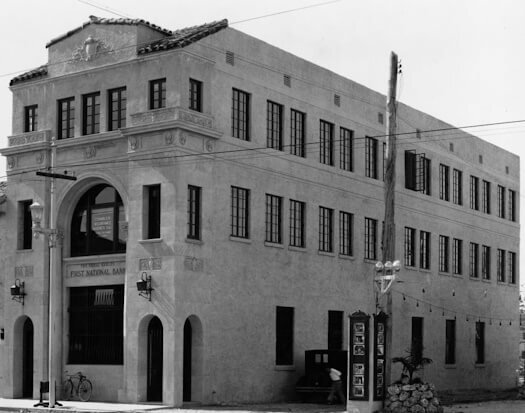
First National Bank of Coral Gables CIRCA Ninteen Twenty-Six
According to Yglesias, he already had introduced his nephew to two members of his group. The first was Coral Gables First National Bank official Raul Menocal who oversaw their prior financial transaction. Another member of this supposedly backed official group was bookkeeper Urbano Anton who handled the money raised by Guillermo Yglesias. A third person identified as Luis Beltram was introduced to Anselmo and eventually referred to as “Security”, a seeming reference to a clandestine security officer. The fourth agent of this group was a middle aged man named Carlos from Puerto Rico, and the fifth member of the group he met was Jose Antonio Rodrigues Sosa. It was then a sinking feeling struck Anselmo and he realized this group was not akin to the many anti-Communist endeavors he supported but “an entirely different proposition”.
Anselmo was still provided no money as further months passed and one file notes in time Yglesias “stated the money was in no way being used for a Cuban operation” despite his nephew’s intent. Alliegro tired of Guillermo’s excuses and undertook his own investigation of the latter’s finances and organization. After contacting his uncle’s former hotel Anselmo learned his relative passed them a bad check for nineteen hundred dollars and that he owed additional funds elsewhere. A pattern of debt and false assurances was revealed and pushed Anselmo to dig further by questioning banker Raul Menocal. The bank employee disturbingly revealed he was under the assumption Guillermo “was legitimate” and working for the CIA but knew nothing of any other group.iv The betrayed nephew would proceed to visit Jose Sosa at his workplace Florida Lumber to “confirm his suspicions” and discovered Yglesias had approached the lumber worker with a similar pitch to join his group. Sosa additionally told him Anselmo himself was presented to Jose as a CIA employee to further support Guillermo’s repeated lies.
Armed with significant facts that could dispel the repeated deceptions perpetrated Anselmo went to his uncle Guillermo and demanded all of his money back. This prompted a third assurance of the money being returned after over four months had passed since it was invested without producing a cent. The money was still never received and finally Alliegro decided to contact the Central Intelligence Agency to report his uncle’s fraudulent activities. He informed Yglesias that he sought an interview with the CIA and was threatened with claims of being incriminated in related crimes or “that some terrible fate would befall him”.v It seems the younger man had finally scared the elder charlatan by involving actual government agents and prompted a death threat in return. Anselmo followed through with his intended course to alert officials and unsurprisingly his uncle’s threats were empty.
Yglesias had also simultaneously been pursuing other illegal leads to secure financial support using anti-Castro exiles. Rolando Masferrer Jr., the son of former MRR leader Rolando Masferrer Rojas, informed the Agency that Guillermo had contacted him to discuss “raising money for secret CIA operations in Latin America.”vi If he could have secured the younger Masferrer’s cooperation he might have tapped into the millions of dollars that MRR had amassed and its dozens of agents. However Rolando was unconvinced and would inform the Agency’s Miami DCD office June of the attempt falsely using the CIA’s name. This maneuver infers a boldness from Yglesias that may have been a desperate attempt to gain enough resources to escape the consequences of his other failing schemes. Yet Guillermo had several deceptive undertakings that seemed to extend beyond just taking money and greater aspirations for his group.

A COMPANY Patch Honoring Troops of Brigade 2506
The fall of nineteen seventy-three had Guillermo Yglesias approaching Antonio Eugenio Iglesias Pons, a close associate of Nicaraguan President Anastasio Samoza. Guillermo’s latest target was a former Cuban Army officer amidst the nineteen fifties who eventually became a liaison with the US Embassy and explosives expert. Antonio was among the members of the captured CIA supported Brigade 2506 following the Bay of Pigs and his brother was reportedly executed by the Castro regime. He further had developed ties with the aforementioned Nicaraguan leader and former employment with CIA that were of interest to others.vii viii Additionally, intelligence gathered by officials would place Antonio undertaking illegal anti-Castro exile operations until at least nineteen seventy-two. Guillermo approached Pons and offered employment with Belen Enterprises, a supposed front company for the CIA, located in the Floridian city of Miami. Yglesias would offer Antonio a generous salary of twelve hundred dollars monthly to have “very little to do” and he eventually realized this was due to his relationship with President Samoza. Pons was a useful contact which provided access to a world leader and his prior associations with the Agency could be used by Guillermo to offer the mask of legitimacy to fraudulent operations.
Amongst the same period Guillermo Yglesias had duped local real estate business owner Andres Castro to employ him and finance multiple fake real estate deals. Under official pretense the Agency impersonator borrowed roughly four million dollars or just over twenty-six million dollars in modern value. Using Antonio Pons they secured a one million dollar loan from the Nicaraguan government but Yglesias did not agree to use the bank foreign officials selected. Perhaps Guillermo could not launder the money received without utilizing his bank of choice and that deal fell through. Paired with the loans that would never be repaid, this eventually proved catastrophic to Castro’s business and during nineteen seventy-four he dissolved Belen Enterprises and fired its five employees.ix As the consequences mounted nearly every person beyond Guillermo's nephew still believed they had been part of CIA operations. Many who held Yglesias culpable likely still believed he was an instrument of the US government and if he would not return the stolen funds perhaps a court would.
The Agency had first learned of the peripheral CIA impersonations Guillermo Yglesias amidst the summer of nineteen seventy-three and less than two years following the matter had become a serious issue. A Miami Herald article from that spring noted Andres Castro “claims the Central Intelligence Agency was behind his selling of counterfeit mortgages” and “blamed the CIA for the failure of his mortgage business”.x Castro would name Guillermo Yglesias and Antonio Iglesias Pons amongst others as defendants but the impersonator and his former employee’s locations were then unknown. The failed business owner told the press he had provided offices to both men for over a year but what actual business they were conducting cannot be fully verified.
Prior events demonstrate that even a sometimes haphazard plot might launder millions in illegal funds for purposes unknown, influence foreign leaders, and successfully impersonate officials for more than a year without detection. Even when an intelligence group has some foreknowledge of the people and crimes involved they still require time to ascertain more information. This plodding bureaucracy failed to decisively act before the matter had exploded in the press and left them with a potential ten million dollar bill. What could a truly organized criminal group seeking to undertake greater nefarious deeds accomplish before most officials were aware they existed?
Sincerely,
C.A.A. Savastano
References:
i. Federal Bureau of Investigation, October 16, 1961, CIA Liaison Material, United States National Archives and Records Administration, NARA Identification Number: 124-90139-10121
ii. House Select Committee on Assassinations, Segregated Central Intelligence Agency File, DCD Information Report: “Guillermo Yglesias/Efforts to Raise, June 28, 1973, p. 1, The Mary Ferrell Foundation, maryferrell.org, NARA ID: 104-10071-10370
iii. Ibid, pp. 2, 3
iv. Ibid
v. Ibid, pp. 4-5
vi. Central Intelligence Agency, October 25, 1974, Speed Letter: Military Armament Cooperation, NARA ID: 104-10074-10065
vii. House Select Committee on Assassinations, August 4, 1975, FBI Subject Files, A-B, No Title, pp. 16-17, NARA ID: 124-10281-10062
viii. Ibid, p. 5
ix. Ibid, p. 19
x. CIA, Russ Holmes Work File, (n.d.), Newspaper Articles on JFK Assassination, p. 42
Related Article
The Autonomous Groups
May 8, 2024
Meet The Jacobs (The Couple That Befriended Marina Oswald)

The Unites States Information Agency (USIA) is a former intelligence group organized to conduct “foreign opinion research, media reaction reporting, and special evaluations and analysis” during the Cold War.i This group first emerged as part of the Coordinator of Information’s (COI) office led by General William Donovan amid WWII. Similar to the Central Intelligence Agency it was reconstituted from minor groups once within that COI’s office but USIA was not created until nineteen fifty-three. They administrated some foreign cultural and educational programs run by the Department of State, used press outlets such as the Voice of America, and gathered worldwide intelligence. Among the projects USIA supported was the American National Exhibition in Russia held in the course of nineteen fifty-nine. The display was presented to demonstrate several aspects of American life to the Russian public and focused on western cultural and technological innovations. Millions of people over the course of months reportedly filled a park in Moscow to observe the gathered displays. Following the exhibition’s successful conclusion one of the USIA’s press officer’s and his family were still present in Russia’s capital until the end of October. That employee’s name was John Jacobs.

JOhn Jacobs After HIS USIA Service
John Kedzie Jacobs was born April 5, 1918 to farmers Edward and Bertha Jacobs within the New York village of New Paltz. The young man was raised with siblings on a farm while attending a local schoolhouse and eventually New York State’s Highland High School. He would subsequently graduate from Antioch College before he briefly worked in an advertising firm and transitioned from advertising to press work for Gallop during nineteen forty. John despite prior reservations would enlist with the United States Army Air Corps following the attack on Pearl Harbor. He gained employment with the Unites States State Department later that decade to write articles for the Voice of America press service. John K. Jacobs by the nineteen fifties would join the USIA following its transformation from the State Department’s International Information Administration group.
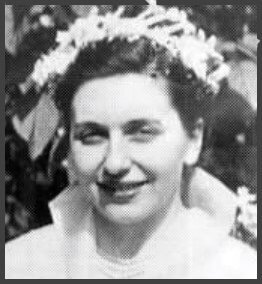
CAtherine JACOBS AT Her Wedding AMIDST Nineteen Fifty-Two
Jacobs would meet his wife Catherine who had immigrated from a Soviet bloc nation to the United States under the name Katia Altschuller. Catherine “Katia” Jacobs was born December 25, 1921 within Bulgaria, resettled to America during the nineteen thirties, and became a citizen by the end of the nineteen forties. She married John Jacobs amidst nineteen fifty-two and they had four children by the close of nineteen fifty-nine. The entire Jacobs family would travel among the spring of that year to Moscow for a support role in the upcoming American National Exhibition. Officials note that attached to her passport was a memo granting John Jacobs “Top Secret Commerce security clearance” from the State Department to “assume duties as Press Radio Officer”. They were set to return October 30, 1959.
Lee Harvey Oswald attempts to renounce his American citizenship October 16, 1963 and members of the press quickly learn of his presence. Reporter Priscilla Johnson would be informed by a US consular official the same day Oswald resided in the same hotel she did. This initiated an extensive interview with Oswald and Johnson would report he was a misguided young man, poorly educated, and was out of his depth. United Press International (UPI) reported Oswald’s defection story at length two days following the Jacobs family’s departure. The press quickly seized upon the idea of Oswald being a disillusioned traitor who abandoned the United States and professed his desire to live in Russia. This desire would seemingly be temporary because he returned to America with a new family more than two years later.
Priscilla Johnson was granted covert Agency approval by nineteen sixty-two, two years later she moves in with Marina Oswald for an extended period, and the during the nineteen seventies publishes a book titled “Marina and Lee” while still falsely claiming she had no official connections.ii Yet in every other prior noted instance it was the Oswald family moving in with others and during nineteen sixty-three they lived in the Texan city of Irving with the Paine family. Ruth Paine had prior invited Marina and her children to live with her family and in time discussed the Oswalds with her sister Sylvia Hoke, employee of the CIA.iii Ruth would not be the last person with official connections seeking to host the Oswalds before and following Lee’s public incitements, alleged crime, and death. One later invitation is quite interesting due to many Americans considering the Oswald family pariahs and while there were several people in the US that felt sympathetic, Cold War intelligence agents and their relatives were likely not among them. A pattern of surveillance begun years ago within Moscow seems to have outlived its original target.

The USIA’s Former Official Emblem
John Jacobs in that period was employed by the USIA as the Deputy Director of “America Illustrated” when his wife drew the notice of federal officials. According to investigators Mr. Jacob’s wife invited the widow of Lee Harvey Oswald via a letter in Russian to dinner “just after” the death of President John F. Kennedy. John called the invitation merely a “humanitarian” act on the part of Catherine Jacobs but that is seemingly a deficient explanation. Would an intelligence agent’s spouse invite the wife of a person that damaged American interests prior and allegedly killed its president without consulting her husband? This act during the Cold War might destroy his career and her family’s public reputation but despite these possible consequences the invitation was offered.
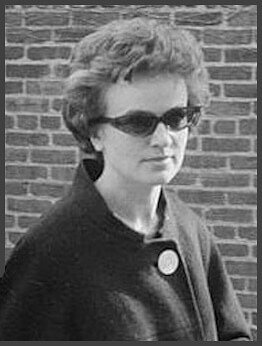
Marina Oswald Called For Testimony amid Ninteen Sixty-Four
Mrs. Oswald according to Mrs. Jacobs sent a “lengthy” response letter around Christmas and Marina was invited to visit “any time she happened to be in the Washington D.C.” and that “several letters of correspondence were passed between them”.iv A seeming relationship was being established between Catherine Jacobs and Marina Oswald and the latter arrived in the nation’s capital during February of nineteen sixty-four for scheduled Commission testimony. The prior dinner invitation from the family of John K. Jacobs was among Mrs. Oswald’s planned stops following the conclusion of her official statements. Marina Oswald called upon the Jacobs family and notified them her testimony was completed February 6, 1964 and desired to accept their prior invitation for dinner. Yet the Jacobs had other commitments and rescheduled the dinner engagement for the next evening.
One prior commitment Mr. Jacobs had was reporting the details of this upcoming get together to his superiors before it transpired. He also notified the USIA Office of Security (IOS) just hours prior to Marina Oswald’s visit and was informed the contact did not require a security clearance and was thanked for providing such information. The IOS official states “there would appear to be no security consequence but in view of public relations aspect he be certain that his supervisors are well aware of what he was doing. He stated that this had already been taken care of.”v Just a single official appears concerned about the potential detrimental potential of what Jacobs was undertaking and it had little to do with “humanitarian” purposes.
Would a simple dinner meeting inspire Jacobs to obtain prior consent from his intelligence superiors or might he use this chance to gather intelligence and cultivate a source. Perhaps the omission of a crucial detail by officials handling the matter would further support this was more than a dining offer. The President’s Commission file did not mention a detail that was included within USIA documents, Catherine did not merely invite Marina and her family to dine but also proposed the Oswalds live with them.vi vii It seems that almost immediately someone connected to an intelligence official sought to feed and house Mrs. Oswald and her children. Marina visited the Jacobs home during the winter of nineteen sixty-four and Mr. Jacobs claimed no further contacts were made but the visit likely was more than just a pleasantry.
Secret Service Agent Charles Taylor contacted the USIA in the course of March to investigate the Jacobs matter but reported nothing derogatory. Taylor “emphasized the importance of the Secret Service not being identified with the investigation” to the USIA agent dealing with the matter.viii The Federal Bureau of Investigation conducted a subsequent document review in which the several correspondences and multiple invitations from Catherine Jacobs transformed into just a single meal date. John K. Jacobs retired from the USIA amid nineteen eighty-three to reportedly again become a farmer and later a writer that died amid two thousand and fifteen. Subsequently released official files provide a greater view of the circumstances surrounding the Jacobs family’s involvement with Marina Oswald and the USIA’s foreknowledge of their plans. Yet nearly all public records about Jacobs neglect to mention the full extent of this peculiar incident or his extensive service for decades within US intelligence groups.
Sincerely,
C.A.A. Savastano
References:
i. Records of the United States Information Agency (RG 306), n.d., United States National Archives and Records Administration, archives.gov
ii. C.A.A. Savastano, December 5, 2017, The Power of the Press, THR, tpaak.com
iii. Consolidated CIA Files, Sylvia Ludlow Hoke, tpaak.com
iv. United States Information Agency, November 14, 1966, Jacobs, John Kedzie, NARA ID: 165-10001-10036
v. USIA, March 3, 1964, No Title, NARA ID: 165-10001-10033
vi. President’s Commission on the Assassination of President Kennedy, Warren Commission Document 867, Federal Bureau of Investigation Letterhead Memorandum of 17 April 1964, maryferrell.org
vii. USIA, March 13, 1964, [R], Oswald, Marina, pp. 1-2, NARA ID: 165-10001-10032
viii. Ibid
Related Article
Note the Chain
April 9, 2024
The Death and Times of a Gangster pt. 2

Sam Giancana AKA Anthony de Bendo
Salvatore Momo “Mooney” Giancana was born during the spring of nineteen hundred and eight within the Little Italy section of Chicago. He spent his formative years in street gangs and was responsible for several crimes, including murder, by reaching the age of twenty. Sam gained the position of driver in the ranks of Al Capone’s gang and with the passing of the nineteen thirties would officially joined the Chicago mafia. Officials note amongst nineteen forty-nine he became the right hand of former Capone Gang leader Anthony “Big Tuna” Joseph Accardo. Giancana over the years would conceal his identity to undertake crimes by using a prodigious amount of aliases which required Federal Bureau of Investigation officials to link his nearly one hundred false names. Momo’s rising influence also garnered him a percentage of the profits made by several gambling rackets and liquor businesses within the suburbs of Chicago. It also brought him to the attention of the United States Department of Justice and its subordinate groups.
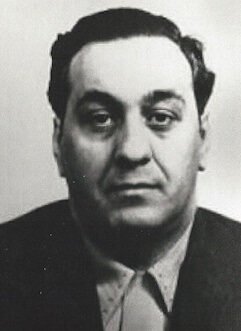
Chicago Crime Boss AnThony j. Accardo
Sam’s true name appeared a year later on the list of prominent underworld figures Attorney General James McGrath distributed to Justice Department agencies. With his increased power came greater public attention and United States Senate Crime Investigating Committee sought to question him following his appearance on the aforementioned list of important mafioso. Ten days following the press announcement of his possible questioning by officials Giancana was suspected of conspiring with other criminals, including hit man Charles “Typewriter” Nicoletti, to murder a local police lieutenant in his own home. Salvatore’s brazen actions reveal his utter contempt for the law and these earlier years are marked with repeated violence without concern for legal consequences. Yet the gangsters of the Windy City had little reason fear local police due to the significant bureaucratic corruption the mafia had established over the decades.
A member of the Chicago press told FBI officials amid nineteen fifty-two dozens of underworld records that should have been in the files of the Chicago Police Department (CPD) had vanished. The Bureau was able to locate nearly all of the missing documents with its own holdings and notably the CPD had originally provided them. Such internal corruption allowed Giancana to gain power with each unrecorded murder, extortion, kidnapping, and bank robbery he undertook. Mooney’s reputation of being a dangerous and respected man was cemented by an extensive trail of bodies as he spent many years enforcing the mafia’s will. The next year Paul DeLucia aka Paul Ricca, a former bodyguard to Al Capone, would ascend to lead the Chicago Outfit with his “enforcer” Sam Giancana. Momo would again demonstrate his cunning by using third party assassins via intermediaries to serve the mafia’s interests and conceal its hand from some crimes. He would escape being served a grand jury subpoena with the passing of nineteen fifty-five following a tip from a spy the outfit had in official circles. Sam would rapidly expand his criminal empire to assume control of unions, race tracks, lounges, and several legitimate businesses as that decade wore on. Officials following this period would brand him the “arch killer” and boss of the Chicago underworld.i
By the close of the nineteen fifties a United States Senate committee was investigating criminal enterprises and they subpoenaed Giancana for testimony. He replied to most questions by invoking his 5th Amendment rights and “only laughed when asked how he ranked in the crime hierarchy”. He conferred with gangland fixer Johnny Roselli about increasing their criminal interests within Las Vegas hotels and casinos in the course of nineteen sixty. The Central Intelligence Agency would approach both Salvatore and Roselli in that period to discuss using the mafia to assassinate Fidel Castro but no plot of substance emerged. Instead the wily Giancana used the illegal contacts as blackmail and forced Kennedy administration officials to dismiss unrelated legal charges against him. A year later Sam would meet with additional criminal notables to acquire shares in at least three Las Vegas casinos using Johnny Roselli and others as intermediaries.
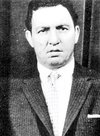
Enforcer Dominic “Butchie” Blasi
Amidst the summer of nineteen sixty-three Momo was attempting to replace the alderman of Chicago’s First Ward, a person he ousted, with his relative to cement political control of that area. Yet his chosen political appointee John D’Arco was already a member of the Illinois state legislation and the media exposing this situation would prevent Giancana’s plotting.ii Simultaneously, Giancana was still the subject of extensive Bureau surveillance that monitored his daily activities and officials installed surveillance equipment in at least one establishment he frequented. A notable figure serving Mooney in the years before he rose to power was Dominic “Butchie” Blasi. This mob enforcer was Giancana’s bodyguard during the nineteen sixties and the FBI thoroughly interviewed him on multiple occasions in the same decade. One meeting was undertaken in the course of nineteen sixty-four where Blasi confirmed that Giancana believed that federal officials were keeping him under constant surveillance. Dominic told Bureau officials he did not accompany Sam on a recent Hawaiian trip due to not making “that kind of money”.iii At this point Giancana was sharing control of the Chicago Mafia with Anthony “Tony” Joseph Accardo, his former mentor, until Salvatore was arrested and jailed. The next year he was giving orders from Cook County jail to his trusted protege and hit squad leader Charles Nicoletti.
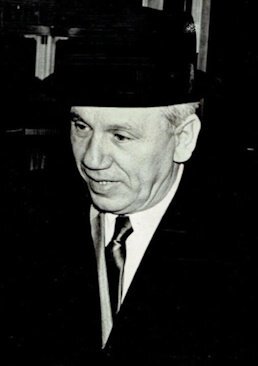
SAM Battaglia led the Underworld After Giancana
As nineteen sixty-six passed Blasi was released from jail and contacted for another official interview. Bureau special agent questions ranged from the location of Sam Giancana to relationships the mafia boss had with some his family members. He noted that Sam would spend lavishly upon various women but he was “frugal” with blood relations and Momo’s brother was selling “hot” watches to survive. While Blasi told officials he would not discuss the criminal business of his associates he “agreed to arrangements for further contacts”.iv In the same period competing factions were struggling for control of Chicago’s mob and Sam Battaglia replaced Giancana within the criminal infrastructure. Following his release from prison Giancana fled the US and spent time in multiple Latin American countries to avoid further prosecution. It required nearly a decade for American officials to finally locate and extradite him from Mexico City amid nineteen seventy-four. Following Sam’s relocation to the US he again resided in Chicago and was still recovering from prior surgery abroad. Additionally, he was subpoenaed for testimony before the US Senate about his connection to the CIA’s plotting against Castro but Salvatore died before that could happen.
Dominic Blasi has been repeatedly deemed Giancana’s assassin over the years by varying sources and official documents would support that determination. Yet these claims rarely offer the precise details, that Blasi’s FBI connections explain official failures to apprehend him, and the provenance of the murder weapon. Bearing new facts and undertaking a fresh review of the crime presents a clearer picture of the ambush within Momo’s own basement. Motive, means, and opportunity are the legal requirements used to discern a suspect’s viability and methods used in a crime. In this matter the motive is likely to silence the old boss and prevent any chance he might divulge related mafia secrets. Additionally, Giancana was attempting to regain some of his lost power and this endangered the holdings of Tony Accardo. The Chicago outfit had a strong motive to remove Momo from the equation before he could testify or regain his lost influence and exact revenge.
As for the means, the weapon used to kill Giancana was one of a pair that was purchased by an unknown criminal in Florida years prior. The FBI would trace the murder weapon and learned “the pistol was sold to Tamiami Gun Shop...August 9, 1965...however, has no documentation reflecting this acquisition.”v The Bureau learned the gun shop was a “dummy” business that had been used to hide illegal weapons deals with criminals, Cuban exiles, and CIA related figures. The other pistol bought with the Giancana murder weapon according to officials was used in the unsolved murder of criminal August Maniaci a few months after Momo’s death. The driver was hit squad leader Charles Nicoletti and a witness identified his companion Paul Schiro as the assassin.vi Thus, both weapons were previously acquired by the Mafia and distributed to people within its ranks for specific murders.
An opportunity to dispatch Salvatore Giancana would present itself the evening of June 19, 1975. Joe DiPersio served as the Giancana’s home’s caretaker and had went for a brief stroll with the old mafioso the night of his death. Dominic Blasi was subsequently observed by DiPersio looking around the house for scotch to drink less than thirty minutes before the attack on Mooney. DiPersio would provide Blasi a glass full of ice and “cleaned up the mess” from a dripping pipe than Sam noticed in the basement ceiling. The caretaker inquired if anything else was required and Momo replied if DiPersio was needed he would call. DiPersio closed the basement’s sliding door to provide them privacy and ventured back upstairs to watch television with his wife at roughly “11:20 p.m.”.vii He would subsequently note the air conditioner was on and this paired with the volume of the television proved quite loud. About thirty minutes later he rose to check on Sam and noticed that Blasi’s vehicle was no longer parked in the driveway.
Within the scant period Giancana and Blasi were unobserved the elder criminal decided to prepare and cook a meal. This consumes precious time which supports unknown people did not have foreknowledge of Giancana’s temporary isolation from protection. In those last moments only a single person was in the basement with Momo, the person for years he trusted to protect his life. Officials note the murder weapon utilized a silencer and this would further cement the assassin realized others were nearby and they required a discreet method of killing Giancana. It was only during this brief window a killer might strike with the rest of the household beyond reach and without the ability to hear what transpired downstairs. Since Dominic Blasi was a recent visitor he did not worry about his fingerprints being all over the crime scene and he quietly leaves the house unobserved.
Joe the caretaker opened the sliding door to the basement and called down the stairs to learn if Mooney needed anything before he went to bed. Hearing no response Joe went to the basement to inspect multiple rooms and this led him to find Giancana slain upon the floor. The gangster lay with a pool of blood under his head and the gas stove nearby was still lit with a burning pan of food. DiPersio turned off the stove, “took the pan off the burner”, and “burned his hand” seeking to prevent a fire. Yet the absence of smoke filling these areas indicates the food was cooked shortly before Joe reentered the basement. The lack of any signs of a struggle demonstrates the improbability of an unknown killer and based on his body’s position Momo did not anticipate the shot. The assassin operated quickly and knew the basement exit allowed them to leave unseen by others.
DiPersio believed the killer “knew Giancana spent the majority of his time in the basement...when he found the body...the door separating the dining room and kitchen area was almost fully closed. This door was never closed...and was recessed into the wall.” These details would only be known to a person familiar with the home’s layout and random killers lacked such information. The caretakers received a threatening call following Sam’s death and were told remain quiet about the event. DiPersio believed he could identify the caller but refused to disclose the name to officials feasibly due to its criminal origins.
Blasi would return to the Giancana home several days later and assured DiPersio he would receive back pay and handle all the mounting bills sent to the house. This seemingly would pacify DiPersio, Giancana’s creditors, and let Blasi continue in service of the Chicago mafia while also maintaining his contacts with officials. Since he was at times a functional Bureau informant it seems officials were unwilling to compromise this source to prosecute the death of a crime boss. They had the motive, the murder weapon, and the only person with adequate opportunity to enact the crime but did nothing. One file notes after Salvatore’s murder Charles Nicoletti resented his old mentor’s execution and the FBI believed Nicoletti’s subsequent murder was due to this lingering dispute with later Mafia bosses. It appears even Giancana’s enduring loyalists may have been purged years later for not coming to heel upon his death.viii Yet we now can feasibly state based on verifiable evidence what group killed Sam Giancana, why, the means they used, and that officials had little reason to solve the case.
Sincerely,
C.A.A. Savastano
References:
i. House Select Committee on Assassinations, Federal Bureau of Investigation Subject File, G-H, Correlation Summary, The Mary Ferrell Foundation, maryferrell.org, pp. 1-20, National Archives and Records Administration Identification Number: 124-10195-10024
ii. HSCA, FBI Subject File, K-L, Criminal Activities, Political Ties, MFF, pp. 9-10, NARA ID: 124-10277-10302
iii. HSCA, FBI, G-H, February 24, 1964, SGI, pp. 1-2, NARA ID: 124-10195-10000
iv. Ibid, G-H, September 16, 1966, SGI, pp. 1-3, NARA ID: 124-10198-10120
v. Ibid, (n.d.), SGI, Murder, Gun, NARA ID: 124-10202-10476
vi. Federal Bureau of Investigation, February 27, 1979, Judith Campbell Exner, pp. 2-5, NARA ID: 124-10356-10302
vii. HSCA, FBI, G-H, January 30, 1975, SGI, BKG Invest, Murder, Assoc, pp. 1-7, MFF, NARA ID: 124-10205-10076
viii. HSCA, May 22, 1978, No Title, Charles Nicoletti, p. 12, NARA ID: 180-10109-10350
Related Article
The Death and Times of a Gangster
The Men Who Did Not Kill Kennedy pt. 1
Related Version
Wall Street Window
March 14, 2024
The Men Who Did Not Kill Kennedy pt. 1
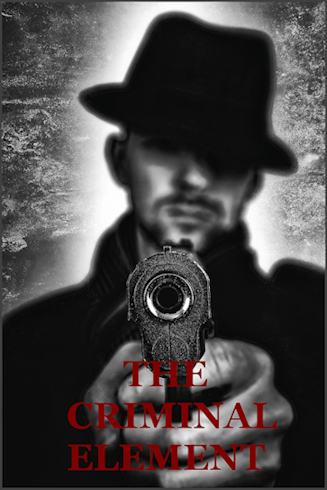
The shadowy mystique cloaking the assassination of President John F. Kennedy has in some respects grown deeper over the decades. The public has been left seeking historical clarity after more than half a dozen Congressional and Executive branch investigations. What remains are cleaved government findings that have denied and supported the existence of a plot to murder America’s past head of state. Authors, experts, and former officials have further over time weighed in to support or deny the existence of a deadly plot but definitive evidence to support popular claims remains scant or just does not exist. Often endorsements, attributions of guilt lacking documentary proof, and recycled past claims with new twists are the standard fare given to the public for consumption. Yet the proof largely dispelling the array of stories created by official and public figures is too often left unspoken.
Ideas of a criminal element related to the American Mafia and other foreign gangsters being directly responsible for the death of President Kennedy are quite popular in modern times. However, several reside upon myths which utilize an infamous criminal that was not involved based upon legal documents or might rely upon the theory of an unreliable or deceased source. Dispelling the claims which utilize these sometimes popular but untenable figures narrows the sweeping ranks of people so many prematurely have decided are responsible. A reduced list with continued expansion can allow for more reliable suspects and possibly lead to one who is viable. Thus, offered for your inspection are two noted suspects which evidence supports had nothing to do with the events of that fateful day.
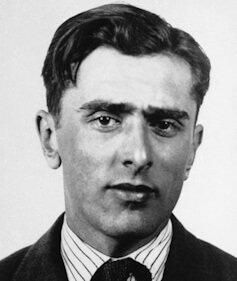
Las Vegas Racketeer JOhnny Roselli
Amongst the most infamous gangsters claimed to be present in Dealey Plaza either firing shots or facilitating some aspect of a criminal conspiracy is fixer Johnny Roselli. He was born Fillipo Sacco near the beginning of the last century but adopted the name John Roselli during the nineteen twenties and made a longstanding connection with Al Capone’s gang in Chicago. Reportedly later that decade the gangster financially enriched himself running a Los Angeles bootlegging operation and by operating prostitution rings.i ii Johnny was increasing his gambling holdings, extorting money from a wire service, and amid the late fifties had sent mafia allies to murder at least two people. Notably, the mafioso is not killing his opponents himself but using others to do so for his benefit. Roselli spent years expanding his Los Angeles rackets and during the sixties additionally gained significant financial kickbacks from some Las Vegas gambling operations.
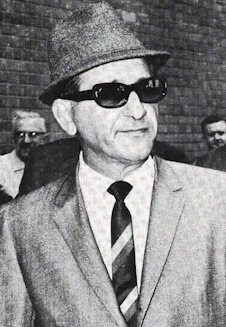
Chicago Mafia Boss Sam GIANCANA
Official documents note that amidst the fall of nineteen sixty Roselli was contacted by Central Intelligence Agency employee Robert Maheu to discuss the potential use of criminals for one of its several plots to assassinate Fidel Castro.iii Subsequent meetings included Chicago mob boss Sam Giancana and would provide him means to blackmail officials by quashing other unconnected criminal charges. Tampa boss Santo Trafficante was also present for a meeting playing the role of courier and one further syndicate member was later involved. While this would present Roselli’s official importance in making contacts with criminal syndicate leaders, it features him only in the role of bad faith facilitator. He is not a trained assassin and when he did have the opportunity to undertake a murderous conspiracy, he used this chance instead to extort officials. Some claim despite the facts this notorious figure was involved with that precise sort of plot.
All stories that rely upon Roselli’s presence during President Kennedy’s assassination do not account for the official records that disprove such assertions. Unknown to many is the Federal Bureau of Investigation was surveilling him for years prior and following the events of Dealey Plaza.iv Officials monitored Johnny’s apartment and telephone in Los Angles while tracking him during November of nineteen sixty-three across the United States. He went to Arizona, California, and ended in Las Vegas where Bureau informants reported him residing at the Desert Inn Hotel.v vi vii viii Documents support Roselli at this location outside Texas in the days before and following the Kennedy assassination preclude his ability to participate in the crime.ix Official surveillance notes he even accepted a phone call from Judith Exner in his Nevada hotel room on November 22, 1963. Johnny Roselli was a violent criminal, who met a violent end amid nineteen seventy-six, but the facts support he did not kill America’s president.
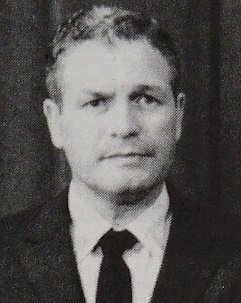
Hit Squad Leader Charles Nicoletti
Another popular asserted suspect in the Kennedy case is hit man Chuckie “The Butcher aka Typewriter” Nicoletti. This mafioso at least was noted for possessing the skills and record of eliminating multiple rivals and other targets. Charles possessed the means to undertake a lethal crime and the Kennedy Justice Department by increasing organized crime prosecutions hypothetically give such a person a plausible motive. Yet a final essential part of Nicoletti’s asserted participation is lacking, the opportunity to committee the act. He likely did not possess this because he was many states away in the period before the assassination and Nicoletti, similar to Johnny Roselli, was also under extensive official surveillance.
Charles was born within the Illinois city of Chicago amidst the winter of nineteen sixteen and raised by Fillipo and Grazia Nicoletti. He resided in that area for most of his life and during the nineteen thirties attained a minor enforcer position within local mafia circles. After Nicoletti’s established a reputation being a hit man he practiced these skills aiding Felix “Milwaukee Phil” Alderisio, the subordinate of Chicago mafia leader Sam Giancana. Johnny Roselli contacted the hit man seeking logistical ideas during the nineteen sixties for a CIA’s assassination plot and one document would subsequently call Nicoletti the syndicate’s “chief executioner”. He was given control of gambling operations in the town of Cicero and during nineteen sixty-two was not regularly performing murders but “planning” hits “in the Chicago area ordered by Sam Giancana”. Nicoletti would “plan each contract and arrange for the personnel to carry out same”. He reportedly followed the hit squad in a different vehicle “to see that the operation was carried out properly” and “no problems arose which would jeopardize” the “Outfit”.x Alderisio and Nicoletti would be arrested that year inside a “hit car” specifically designed with hidden compartments to conceal weapons and switches for turning off its outer lighting.
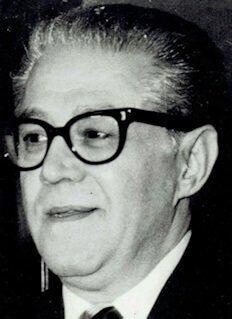
CHicago Loan shark Sam DeStefano
Nicoletti was observed by an FBI source during the middle of November nineteen sixty-three at the Chicago home of loan shark Sam “Mad Sam” DeStefano playing cards, this gathering occurred shortly before the murder of a suspected federal informant. The next day an FBI source was told by DeStefano that “his ‘fat friend’ Leo Foreman was dead” and bail bondsman’s wife reported him missing the same day to local police. Due to past altercations with DeStefano and Nicoletti evidence notes both were suspected of killing the presumed turncoat.xi Leo’s body was discovered by police in a the trunk of a car November 19, 1963 and this incited greater official investigation of both DeStefano and Nicoletti.xii Further inquiry revealed that Foreman was not reporting to officials and police discovered a notebook in his possessions naming the slain man’s criminal and official contacts.
The FBI notes the following day Sam DeStefano attempted to stem the accusations of Foreman’s murder and “submitted to numerous television and newspaper interviews”, which likely brought even greater attention to all involved.xiii Nicoletti feasibly attempted to stay out of the media spotlight and federal officials state in this period their “knowledge” of DeStefano and his “associates” was provided to local authorities. Nicoletti, a current police murder suspect, cannot just sneak away unnoticed while also scrutinized by FBI phone and informant surveillance and with a close associate drawing media attention. The hit man likely attempted to quietly distance himself from the Foreman murder and did not rush across the country to commit a slaying that would generate even more press. Two days later President Kennedy was assassinated and only claims lacking evidence place Charles Nicoletti anywhere near Texas in that period.
In the course of nineteen sixty-seven Giancana had been replaced by Sam Battaglia and Nicoletti was selected to arbitrate internal syndicate problems for his new boss. Six years later Tony Accardo, Joseph Auippa, and Gus Alex were leading Chicago’s syndicate and Nicoletti had became a prominent figure responsible for controlling a group of hit men called “The Blazers”.xiv Nicoletti’s faction within the Chicago mafia pushed for the entire syndicate to deal narcotics, as he was the prior decade, but failed to sway his superiors.xv As nineteen seventy-three passed he was now semi-retired but still maintaining extensive rackets and in that period Sam and Mario DeStefano were among those facing trial for the death of Leo Foreman. Following his court room antics Sam DeStefano was killed and his brother Mario would be convicted of murder. Charles Nicoletti during nineteen seventy-seven was killed outside an Illinois restaurant by an unknown assailant and his body was left in a car similar to his prior associates victim.
Sincerely,
C.A.A. Savastano
References:
i. House Select Committee on Assassinations, Federal Bureau of Investigation Subject File, Q-R, Subject: John Roselli aka AR, June 8, 1965, pp. 1-4, The Mary Ferrell Foundation, maryferrell.org, National Archives and Records Administration Identification Number: 124-10288-10198
ii. Ibid, December 12, 1957, Subject: John Roselli, Criminal Activities: Gambling-Horse Racing, pp. 11-13, MFF, NARA ID: 124-10200-10419
iii. HSCA, Segregated Central Intelligence Agency Files, Roselli, Johnny; Summary of Activities in Cuba, pp.1-4, NARA ID: 1993.06.28.18:21:05:560310
iv. HSCA, FBI Subject File, No Title, John Roselli, Anti-Racketeering, pp.1-3, NARA ID: 124-10278-10062
v. Ibid, November 23, 1963, No Title, John Roselli, pp. 1-2, NARA ID: 124-10222-10401
vi. Ibid, November 19, 1963, No Title, John Roselli, pp. 1-3, NARA ID: 124-10222-10404
vii. Senate Select Committee to Study Governmental Operations with Respect to Intelligence Activities, Church Committee Boxed File, April 23, 1976, Testimony of John Roselli, p. 5, NARA ID: 157-10014-10000
viii. HSCA, FBI Subject File, John Roselli, Elsur, pp. 10, 12, 14, 17, 18, 20, 28, NARA ID: 124-10353-10149
ix. Federal Bureau of Investigation, December 02, 1963, [No Title], JRO, pp. 1-2, NARA ID: 124-10222-10405
x. FBI, July 18, 1962, No Title, NARA ID: 124-10308-10119
xi. FBI, November 21, 1963, THP, ACT, Foreman, Leo, Murdered, Info, pp. 1-2, NARA ID: 124-10200-10106
xii. HSCA, FBI Subject File, C-D, Richard Cain, Murder of Leo Foreman, p. 69, NARA ID: 124-90095-10036
xiii. Ibid, November 22, 1963, THP, ACT, ASSOC, BKG, Numerous Individuals, pp. 7, 12, NARA ID: 124-10200-10102
xiv. Ibid, A-B, Gus Alex, April 20, 1973, No Title, pp. 14, 15, NARA ID: 124-10196-10353
xv. Ibid, May 24, 1973, Anti-Racketeering, pp. 1,2, NARA ID: 124-10197-10261
Related Articles
The Man Formerly known as James Sutton
The French Deception
Problems in Black and White
Related Version
Wall Street Window
February 25, 2024
The Lone Gunman Podcast: Symphony of Destruction with Carmine Savastano

C.A.A. Savastano returns to The Lone Gunman Podcast with Rob Clark and Joe Borelli! Among the subjects reviewed is evidence proving an expansive file purge by military and Defense Department officials. They also discussed a request to the Defense Intelligence Agency to confirm this prior document obliteration that was given a “reply”, the importance of reliable sources, combating myths, and other notable figures related to the assassination of President Kennedy.
February 5, 2024
Government Officials Destroying the Evidentiary Record (JFK Assassination Files)

An important responsibility of ethical government agencies is the ability to provide documentary evidence of viable importance for later historical study. To occlude, purposefully withhold files, and even destroy evidence is the antithesis of government transparency and provides reasons to doubt official intentions regarding any matter of controversy. Official concerns about the public reaction to noted violations of law are irrelevant and do not provide a legal reasoning for destroying records. Yet by nineteen sixty-seven the Dallas Police investigation, FBI Investigation, Warren Commission, and Garrison Case had left several questions in the public mind regarding assassination of President John F. Kennedy. It was also during this period that military intelligence was undertaking several illegal programs that further incentivized the need for destroying files.
During the nineteen sixties military intelligence sought to destabilize and counter the demonstrations of Civil Rights and anti-Vietnam War groups within the United States. A DOD statement regarding the need for a future oversight program reveals that United States Army units required intelligence gathering to perform their missions and teamed with the Federal Bureau of Investigation to surveil threats. The required information exceeded the ability of the Bureau and thus Army intelligence began to domestically collect information. The Defense Department notes “Eventually, DoD intelligence personnel were using inappropriate clandestine and intrusive means to collect information in a nationwide data bank, and sharing this information with law enforcement authorities.” Officials reported that several targets were not “legitimate DoD targets…” and “posed no foreign threat” but instead were “U.S. persons who were exercising their First Amendment rights”. Varying types of communications used by military targets were intercepted and using media cover military intelligence had even “infiltrated the 1968 Democratic National Convention in Chicago”.i Obviously the unintended expansion of military projects or “mission creep” had taken hold and morphed from just limited subjects to include nearly anyone who fulfilled the vague definition of a domestic threat.
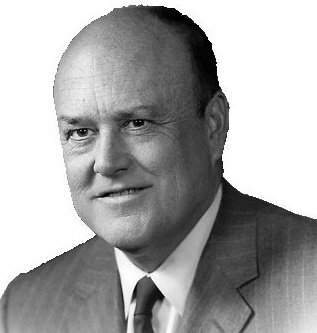
US Defense Secretary MElvin LAird
President Richard Nixon’s first Secretary of Defense Melvin Laird was appointed during nineteen sixty-nine and several programs that later decried by Congressional officials continued unabated. These military problems were inherited from the actions of his predecessors under past administrations. A United States Army officer would order the destruction of files regarding any “non-DOD affiliated persons and organizations” during 1971 and this vague classification would allow future damage to important evidence. House Select Committee on Assassinations counsel Robert Blakey stated amongst the impropriety occurring was the aforementioned destruction of military intelligence files. One interview of Blakey states “In 1972, largely as a result of the investigations into military intelligence...the Defense Department destroyed all the military intelligence files they had about American citizens”.ii It notes that all the officers involved in related evidentiary destruction were interviewed but Congressional officials retained only testimony and never actually reviewed the material in question. This purge according to the interview was attributed to bureaucratic mistakes that rendered unintended damage to the evidentiary record. Yet this quaint prior repeated excuse to avoid responsibility does not explain the destruction of evidence in this matter because documentary obliteration continued past this claimed date. The destruction of these files was largely masked in the political upheaval of the summer of nineteen seventy-two as public’s eyes were first drawn to the arrest of the Watergate burglars.
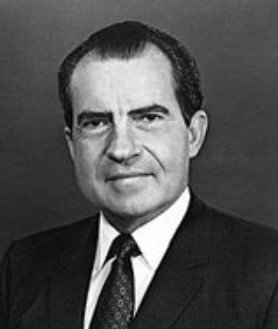

Agency Director Richard Helms
Later that same year Richard Nixon would reportedly attempted to force the Central Intelligence Agency to impede the FBI’s investigation of the Watergate matter. He instructed Agency Director Richard Helms and his subordinate Vernon Walters to cover up the facts based on the advice of his staff. This command was ignored by Helms and for a time the CIA would remain outside the machinations of Nixon to bury the truth.iii Amidst January of nineteen seventy-three the embattled Nixon fired Agency Director Richard Helms, likely due to his noncompliance with orders to obstruct related legal investigations. During the same period former FBI agent George Gordon Liddy and former CIA operative E. Howard Hunt, the last two Watergate burglars, were found legally guilty. Just a day before the month ended Nixon would appoint the new Secretary of Defense Elliot Richardson and less than six months later the President had replaced the DOD’s leader two additional times.
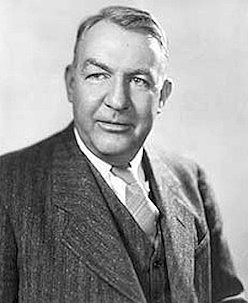
Committee CHairman SAM Ervin
“February 5, 1973, Senator Edward Kennedy” put forth a Congressional resolution to “establish a Select Committee on Presidential Campaign Activities...related to the presidential election of 1972.”iv The US Senate quickly approved the idea and Senator Sam Ervin was named the chair of the committee’s investigation. This would immediately signal to all related intelligence groups a potential reckoning which could target any of the organization related to illegal domestic activities. Further, this investigation began a series of inquiries which touched upon of several matters of historical importance that included the Kennedy investigation files. However, despite the beliefs of prior investigators and reporters, all the files related to the Kennedy case were not destroyed in the time period they believed.
The destruction of files would be ongoing under multiple Defense Department leaders and the uncertain nature of the DOD’s lead position seemingly added to already existing confusion. While the highest level of the Defense hierarchy was repeatedly shifting amongst ninteen seventy-three, those lower ranking officials intent on destroying select files among the DOD’s evidentiary holdings were more enduring. An official file regarding Lee Harvey Oswald’s records held by the DOD states “Access to Oswald’s Military Intelligence file, which the Department of Defense never gave to the Warren Commission” was also denied to the subsequent House Select Committee on Assassinations (HSCA). According to Defense Department officials they destroyed the Oswald file as part of a program to eliminate all files pertaining to nonmilitary personnel begun with an Army directive years prior to eliminate such documents. Yet Lee Harvey Oswald’s files did not fit the criteria for destruction based upon the Army’s order.
Lee Harvey Oswald was enlisted with the United States Marines before he defected and in time was given his infamous official status as President Kennedy’ alleged murderer. Oswald had multiple issues while serving and faced military punishment for his disobedient conduct and ignoring military procedures. He clearly was a past DOD related personality of historical significance and based upon official records it was military procedure to hold the records of those with derogatory information for “twenty-five years”.v The Department of Defense should have maintained Oswald’s file until at least the nineteen eighties if regular procedure were followed and would have been among the documents legally protected from deletion by later investigations. Instead the Defense Department states “Dossier AB 652876, Oswald, Lee Harvey, was identified for deletion from IRR (Intelligence Records and Reports) holdings on “(1 March 1973) as stamped on the microfilmed dossier cover.” Lyndall E. Harp was the IRR clerk identifying Oswald records and named them for removal but officials could not offer when or who exactly eradicated these files but they guessed “that the destruction was accomplished within a period not greater that sixty days following the identification…”.vi Harp would transfer later that year to the Defense Investigative Service and remained a civil service employee until at least the nineteen seventies. Notably the stated reasoning for several past evidentiary removals does not explain the targeted attacks upon files related to just the Kennedy investigation. As evidence has prior demonstrated, the Defense Intelligence Agency (DIA), a subordinate of the DOD, would later not excise just files regarding unrelated people in the manner claimed but specifically tore apart all of its holdings regarding the Kennedy assassination case.
When paired with the actions of DOD subordinate groups we can observe the destruction of Oswald’s files preceded a growing attempt to scrub the legal record which violated the Department of Defense’s own protocols. While investigators noted the Army did not have specific requirements for the destruction of files, the Defense Department clearly did as evidence proves. Just months following the destruction of Oswald’s files, a fire struck the Army’s National Personnel Records Center and destroyed “16.5 million files on Army Personnel who served before 1960.” Quite the happy coincidence, as elements of the Defense Department had already begun the destruction of several files before procedure would have allowed it. This immense loss of intelligence and information was largely brushed aside into historical events with the public’s attention largely directed elsewhere.
The Kennedy case evidence would again be requested in the course of nineteen seventy-five as official inquiries began to materialize with creation of the Rockefeller Commission. The Church and Pike Committees soon followed and congressional investigations by each were ongoing in the course of nineteen sixty-six. The same year an executive order by Gerald Ford demanded greater accountability regarding prior military operations in violation of law. The Department of Defense subsequently established the office of Inspector General and launched its Oversight Program amid nineteen seventy-eight to combat the overreaching actions of its personnel. They sought to analyze and report about conducting multiple domestic surveillance and intelligence operations targeting US citizens in violation of constitutional law. The same year the HSCA would be informed by the DIA that it had destroyed all of its files related to the assassination of President Kennedy. Yet investigators remained unaware of the enormous scope of evidence the DOD and its subordinates destroyed before their investigation had even begun.
Sincerely,
C.A.A. Savastano
References:
i. United States Department of Defense, n.d., History of the Department of Defense Oversight Program, dodsioo.defense.gov
ii. Bill Rockwood, November 19, 2013, Interview of G. Robert Blakey, Frontline, PBS, pbs.org
iii. Nixon Admits Asking CIA to Block Watergate Inquiry, Says It Refused, March 25, 1990, Los Angeles Times, latimes.com
iv. United States Senate, n.d., Select Committee on Presidential Campaign Activities, senate.gov
v. House Select Committee on Assassination, April 20, 1978, Numbered Files, Department of Defense, p. 4, archives.gov, United States National Archives and Records Administration Number: 180-10084-10094
vi. House Select Committee on Assassinations, n.d., Communications, The Mary Ferrell Foundation, maryferrell.org, pp. 104-106, NARA No: 180-10147-10163
Find the Wall Street Window version here
Related Article
New Documents Reveal officials destroyed far more evidence related to the Kennedy Assassination Than Prior Believed
January 15, 2024
Comparing physical alteration claims and verified Evidence Destruction
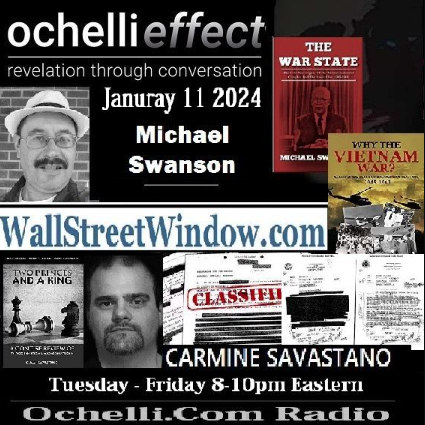
Historian Mike Swanson stops by the Ochelli Effect to discuss past claims of body alteration that persist despite most evidence. Researcher C.A.A. Savastano offers updates regarding his prior discovery of massive evidence destruction by an element of the Department of Defense. Chuck Ochelli and his guests further discuss upcoming new evidence and additional found damage to the evidentiary record by related officials.
January 2, 2024
How The Stories of These Soviet Cold War Defectors Reveal The Intelligence Abyss pt. 7

With the passing of nineteen sixty-six the hunt for traitors within the Central Intelligence Agency continued rapidly expanding. Greater targets brought a renewed vigor to assess each in a growing pool of potential victims chosen using the loose parameters set by prized KGB defector Anatoliy Golitsyn. The desperate search undertaken by the Counterintelligence Staff Special Investigations Group (CISIG) had now consumed significant Agency resources for years while displacing and ending the careers of multiple loyal officers. Several instances of contrived guilt were feasibly due to CISIG gazing too long at the shadows cast by legitimate defectors, employees, and officers. When a detail struck investigators as relevant they often became convinced of deviltry at work in spite of the contrary facts. All this occurred in the name of a hunt unleashed by James Angleton and his subordinates many years earlier for a forever elusive penetration agent.
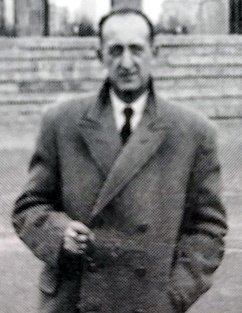
CIA’s Alexander “Sasha” SOGOLOW
Amongst the new counterintelligence staff targets appearing was Russian born CIA employee Alexander “Sasha” Sogolow. While he did have a Slavic name and served in Germany, like many others Sogolow did not fit most of the original parameters set by officials for their quarry. Sogolow’s last name did not begin with K, Sasha was not his pseudonym but the Russian moniker for Alexander other people used. Sogolow further was not a vital agent of influence but a case officer that handled some foreign agents from headquarters amid the nineteen sixties. He would confide to fellow case officer Richard Kovich that CISIG was going to come after him because of his nickname, and he was eventually proven correct in this assumption. CISIG member Newton Miler later admitted that the investigation of Sogolow produced “nothing” and was predicated on Golitsyn’s ideas connecting Sogolow to other suspects.
Anatoliy Golitsyn’s perpetual seeming intent was to discredit all following defectors and thereby render himself the CIA’s most important adviser regarding Soviet intelligence. The rumors he earlier began and fueled with Angleton’s help, such as that Soviet Russia Division leader David Murphy was a Soviet plant, crippled the ability of the CIA to recruit and use multiple viable defectors and operations. Essentially rumors of a mole lingering for nearly a decade wasted vast amounts of resources, incited staff mistrust, and damaged Agency relations with allied organizations. The very purported existence of a traitor could produce or exceed the damage of actual penetration agent if some officials failed to view the situation with great clarity. Seemingly that is precisely what occurred due to the often vague assumptions made by US officials seeking to unearth a mole.
Newton “Scotty” Miler noted at least roughly fifty officers were transferred or removed from the Soviet Division while he participated in the mole hunt. This constitutes just under a quarter of all the functioning officers in that division and surely affected a multitude of projects. Further Agency officers and employees that were damaged because of the ongoing hunt included Vasia Gmirkin, Igor Orlov, George Goldberg, and even President's “Warren” Commission member and former Russian Ambassador William Averell Harriman.i Reportedly Anatoliy Golitsyn had contrived an entire scenario involving Harriman which included an illegitimate Russian child that was Soviet leverage, but none of these claims were substantiated. Apparently the prestige of an outside bureaucrat would not dissuade the seekers in CISIG from locating Sasha by any means necessary using the ideas offered by its favored defector. Ironically, Harriman was among those who saw defector Yuri Nosenko’s contending original statements and dismissed them.

Bureau Officer WIlliam Sullivan
Prior consultations between the CIA and Federal Bureau of Investigation leaders concerning many of the aforementioned suspects offers “CIA was informed there appears to be no basis...for a full-scale investigation of these men...on the basis of allegations by Golitzyn (sic)...based on interviews of Orlov…nothing has been developed.” Bureau officer William Sullivan further stated “...nothing was developed which would support Golitzyn’s allegations against the other two suspects, Richard Kovich and David Murphy. Furthermore, CIA has furnished no documentary material regarding Kovich or Murphy which would in any way support Golitzyn.”ii The Bureau rightfully had vast differences with the assumptions made by the Agency counterintelligence staff because of lacking evidence. It appeared that James Angleton’s past significant influence with Bureau leaders had drastically receded when he championed Golitsyn’s most unlikely ideas.
Yuri Nosenko, like several other defectors, had inflated his rank and importance seeking to establish credibility with his sponsors and begin a new life for himself. Nosenko during this period was still imprisoned under brutal conditions for his denials of continued service to the KGB and prior informing US intelligence leaders the Soviets did not use Lee Harvey Oswald. Conversely, Golitsyn was rewarded for offering a vast unproven disinformation plot which included penetration agent claims, inflating his access to KGB secrets, and importance to US intelligence efforts. One insight we can gather was the obvious lack of similar treatment when comparing Nosenko to Golitsyn, despite their similar bonafides which are overlooked by some. While Golitsyn was praised and rewarded for his several postulations with access to CIA files, Nosenko was decried and illegally held for years in the closest thing to a gulag on American soil.iii Nevertheless, Yuri Nosenko shockingly would receive better treatment by his Agency captors than fellow defector Yuri Loginov.
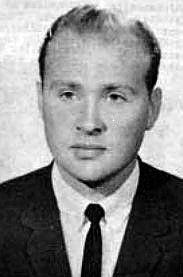
KGB Defector Yuri Loginov
Yuri Nikolayevich Loginov was the son of a Soviet official and his wife born in Russia amid nineteen thirty-three. He was raised within the city of Kursk and later moved to the Russian capital in the course of WWII. Following his education Loginov was recruited during the nineteen fifties by the KGB to serve in the role of “illegal”. Illegals were one type of agent used by the KGB that could be implanted within foreign countries to establish cover histories and conduct operations under these false identities. Loginov was assigned to Finland during nineteen sixty-one and later the same year Anatoliy Golitsyn would defect in that very nation. “...Soviet intelligence suffered terrible blows from internal treason...KGB officer Yuri Loginov became an agent for U.S. Intelligence.”iv
Loginov similar to Nosenko was considered a legitimate defector for years until the Agency’s mole hunt caused Anatoliy Golitsyn to notice him again. Potentially it was during the period Golitsyn had access to Agency employee files that offered mole “suspect” Richard Kovich was for a time Loginov’s case officer. Yet the seeming death knell for Loginov’s credibility was his subsequent confirmation of Yuriy Nosenko’s statements that sat in stark contrast to Golitsyn’s claims. Nor was Loginov the first defector to earn the displeasure of Angleton or CISIG by reaffirming Nosenko’s statements. A different past Soviet defector to Britan’s MI5 intelligence group named Yuri Krotkov had previously affirmed Nosenko was a genuine defector. James Angleton advised English officials they should hand Krotkov back to the Soviet’s because he was an obvious plant, a suggestion to which they balked and refused. Loginov would not fare so well in the hands of the Agency’s mole hunters and the CIA revealed him publicly to South African officials amongst nineteen sixty-seven.
Yuri Loginov was quickly arrested by South African police and faced years of imprisonment without trial similar to Yuri Nosenko. He would according to one press story on the matter “Loginov, 36, was arrested in Johannesburg in 1967...He was held for two years without trial and was said to have ‘sung like a canary’ giving interrogators a list of his contacts in 23 countries.”v Obviously Loginov had provided CIA valid intelligence and this was later gained by South African officials under numerous interrogations. Agency officials “burned” him and South African officials did the same two years later when they traded Loginov back to the Soviets for ten West German agents. He obviously retained value for the KGB that Western intelligence failed to appreciate and his information that did not conform to desired official narratives rendered him persona non grata. Thus, Loginov was handed back against his will to Russian officials and reportedly sent to his doom via a firing squad.vi However the growing list of poor tradecraft decisions authored by James Angleton and CISIG would begin to have serious consequences.
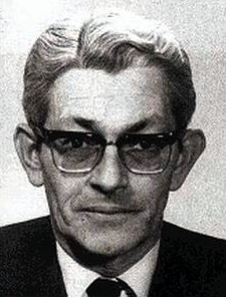
James J. Angleton
An ongoing erosion of James Angleton's influence within intelligence circles accelerated in the course of nineteen sixty-seven. His devoutly held belief in Anatoliy Golitsyn’s claim of moles throughout Western intelligence placed enduring suspicion upon innocent defectors and numerous Agency employees. The counterintelligence leader supported theories which hampered multiple division undertakings and damaged CIA operational capability with ceaseless unproven accusations. Most of Golitsyn’s claims about varying officers from Richard Kovich to David Murphy without evidence had rightfully been disbelieved. The morale of Agency officials began to suffer and persistent doubts about employees unfairly targeted by CISIG had finally taken its toll.
By the year’s end Yuriy Nosenko would be released and compensated for his illegal captivity with eager apologies. This act was perhaps the greatest refutation yet of Golitsyn's varying claims and his CIA sponsor. James Angleton based on the account of one related Agency officer was drinking heavily and flinging threats at his detractors in this period. Strongly worded official requests that he take a break from his duties caused the waning counterintelligence leader to spend time in a coastal part of the Middle East later that year. Angleton faced increasing setbacks that would impede his overwhelming urge to find an elusive mole hidden within the CIA’s ranks. However, similar to the creator of any monstrous situation in which all were suspects and sending men to their death was permissible to achieve its ends, the monster would in time come for those who created it.
Sincerely,
C.A.A. Savastano
References:
i. David Wise, 1992, Molehunt: The Secret search for Traitors that Shattered the CIA, Random House, New York, pp. 172-178
ii. Federal Bureau of Investigation, March 6, 1970, Memo from Mr. W.C. Sullivan to Mr. C.D. DeLoach, Relationships With CIA Alleged Penetrations of CIA, pp. 1-2, Mary Ferrell Foundation, maryferrell.org, National Archives and Records Administration Identification Number: 124-10185-10098
iii. David Stout, August 27, 2008, Yuri Nosenko, Soviet Spy Who Defected, Dies at 81, The New York Times, nytimes.com
iv. Vladislav M. Zubok, 1994, SPY vs. SPY: THE KGB vs. THE CIA, 1960-1962, Cold War International History Project Bulletin, Issue 4, The Wilson Center, wilsoncenter.org, p. 27
v. Russians Make 10-for-1 Spy Swap, August 29, 1969, Page A-10, The Washington Post, washingtonpost.com
vi. A Counterintelligence Reader Volume 3, Chapter 2, Intelligence Resource Program, The Federation of American Scientists, irp.fas.org, pp. 115-116
Find the Wall Street Window version here and other articles by C.A.A. Savastano
Related Article:
How The Stories of These Sovet Cold War Defectors reveal the Intelligence Abyss
How The Stories Of These Soviet Cold War Defectors Reveal The Intelligence Abyss p. 2
How The Stories Of These Soviet Cold War Defectors Reveal The Intelligence Abyss p. 3
How The Stories Of These Soviet Cold War Defectors Reveal The Intelligence Abyss p. 4
How The Stories OF These Soviet Cold War Defectors Reveal The Intelligence Abyss p. 5
How The Stories Of These Soviet Cold War Defectors Reveal The Intelligence Abyss p. 6
November 17, 2023
JFK Lancer Conference Presentation 2023

C.A.A. Savastano shares research and documents concerning his speech “Official Alteration and Destruction of the JFK Evidence” presented at this year’s 2023 Lancer NID Conference. Topics range from minor suppression of evidence to the wholesale destruction of thousands of documents revealed in later government archive releases. The following links provide connected investigation materials about each matter and offer the extent some leaders would undertake to alter or damage the evidentiary record.
The CIA’s publicly disavows a plot and later privately alters its position to consider a conspiracy
Evidence: Memo from Richard Helms to Winston Scott
The Destruction of J. Edgar Hoover’s Files
Article:
New Documents Reveal officials destroyed far more evidence related to the Kennedy Assassination Than Prior Believed
(WSW)
Evidence:
FBI evidence regarding the destruction of Hoover’s Files
The Defense Intelligence Agency Destroys All its JFK Documents
Article:
New Documents Reveal officials destroyed far more evidence related to the Kennedy Assassination Than Prior Believed
(TPAAK)
Evidence:
NSA memo regarding the Defense Intelligence Agency’s complete destruction of all JFK documents it possessed



